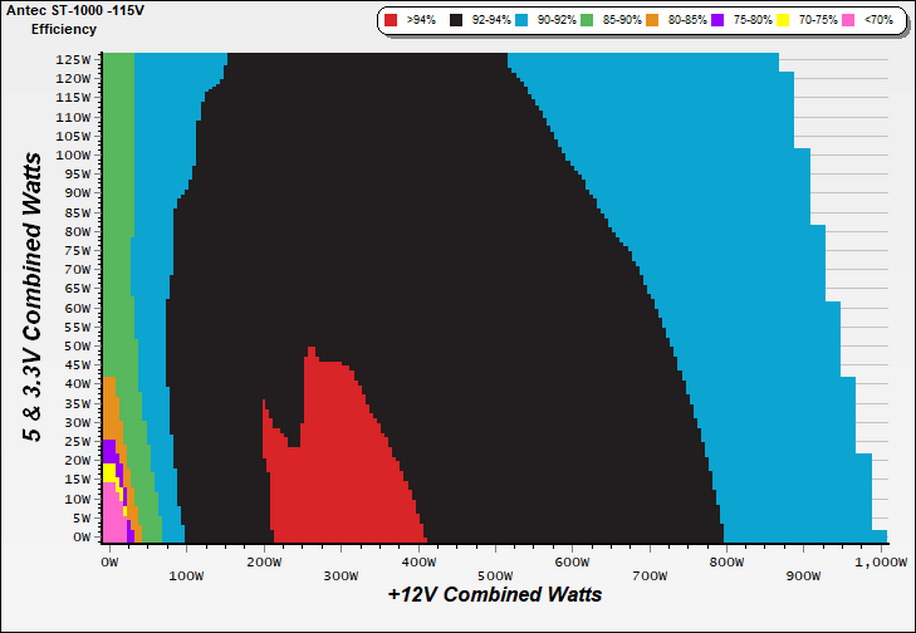Why you can trust Tom's Hardware
Protection Features
Check out our PSUs 101 article to learn more about PSU protection features.
|
Protection Features | Header Cell - Column 1 |
|---|---|
|
OCP |
12V: 117.2A (141.2%), 12.274V |
|
OPP |
1374.26W (137.43%) |
|
OTP |
✓ (164°C @ 12V heat sink) |
|
SCP |
12V: ✓ |
|
PWR_OK |
Proper Operation |
|
NLO |
✓ |
|
SIP |
Surge: MOV |
The OCP triggering point at +12V exceeds 140%, a quite high level, while it is reasonably set on the minor rails. The OPP triggering point is also high, close to 137.5%. All the other protection features are present and have proper operation.
DC Power Sequencing
According to Intel’s most recent Power Supply Design Guide (revision 1.4), the +12V and 5V outputs must be equal to or greater than the 3.3V rail at all times. Unfortunately, Intel doesn't mention why it is so important to always keep the 3.3V rail's voltage lower than the levels of the other two outputs.
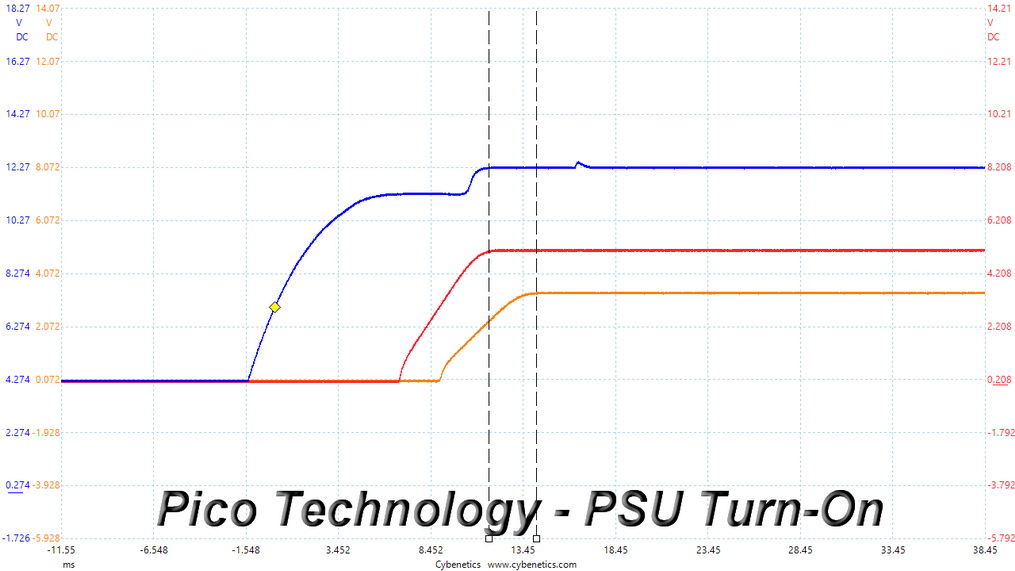
DC Power Sequencing Scope Shots
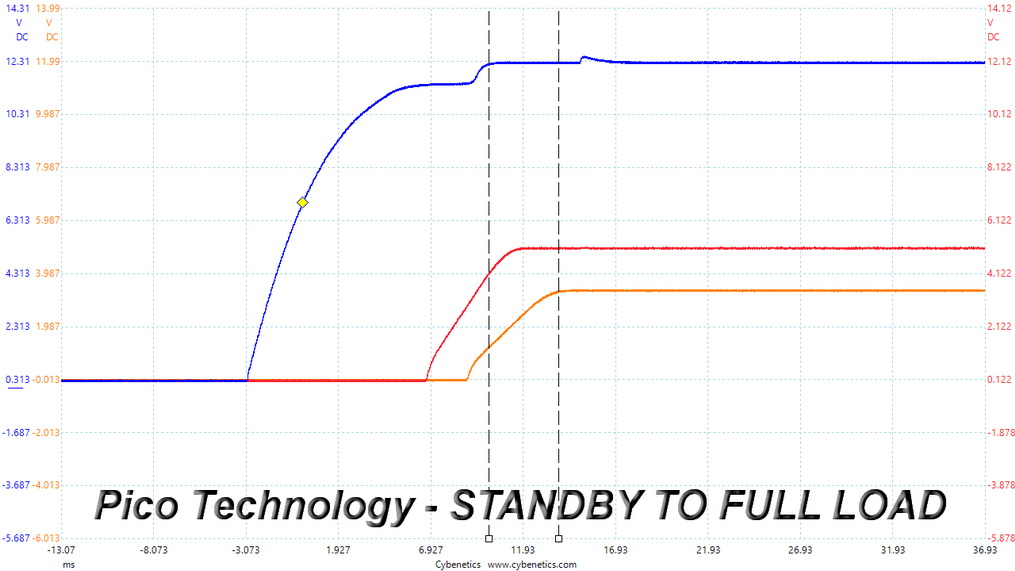
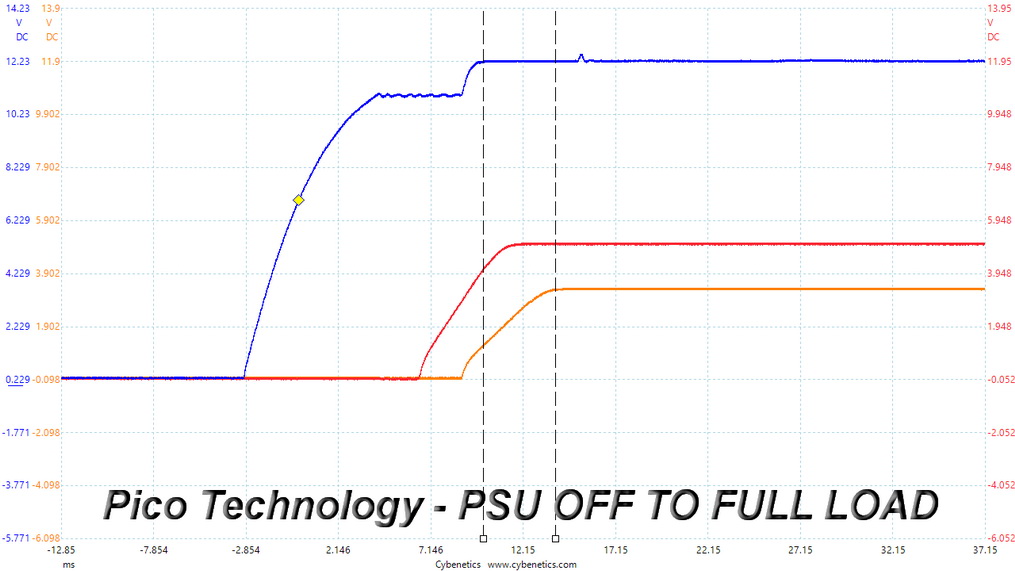
The 3.3V rail is always lower than the other two, so everything is fine here.
Cross Load Tests
To generate the following charts, we set our loaders to auto mode through custom-made software before trying more than 25,000 possible load combinations with the +12V, 5V, and 3.3V rails. The deviations in each of the charts below are calculated by taking the nominal values of the rails (12V, 5V, and 3.3V) as point zero. The ambient temperature during testing was between 30 to 32 degrees Celsius (86 to 89.6 degrees Fahrenheit).
Load Regulation Charts
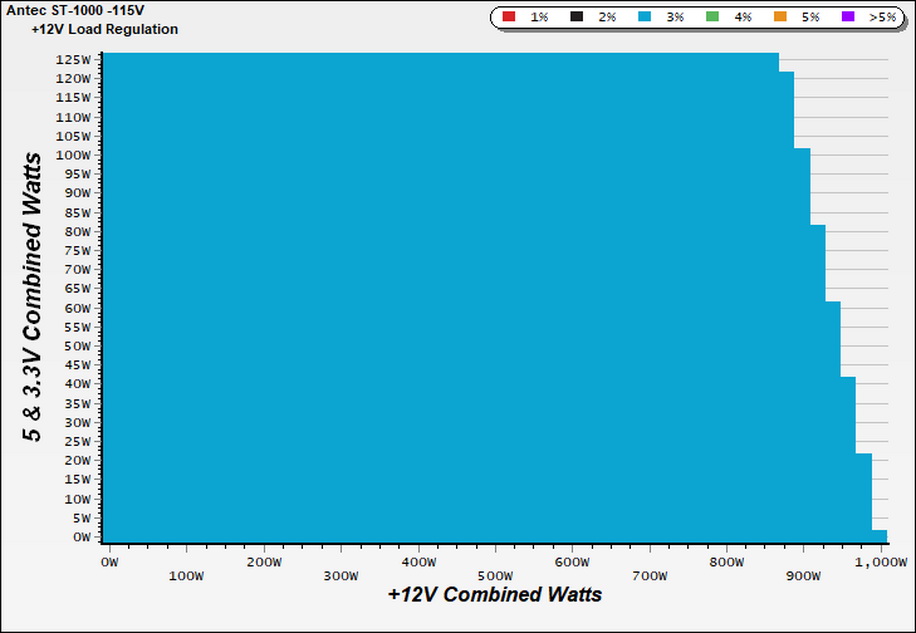
Load Regulation Charts
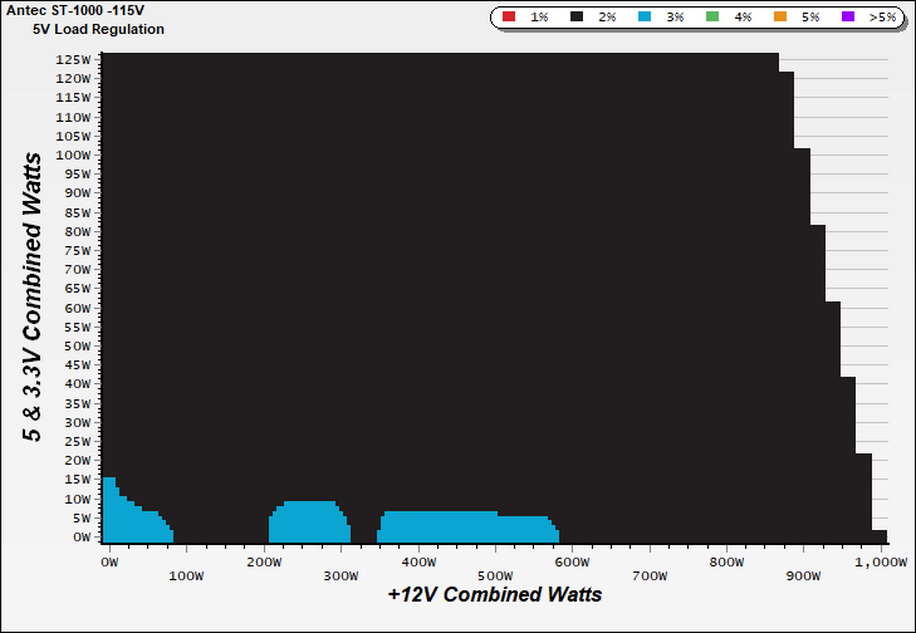
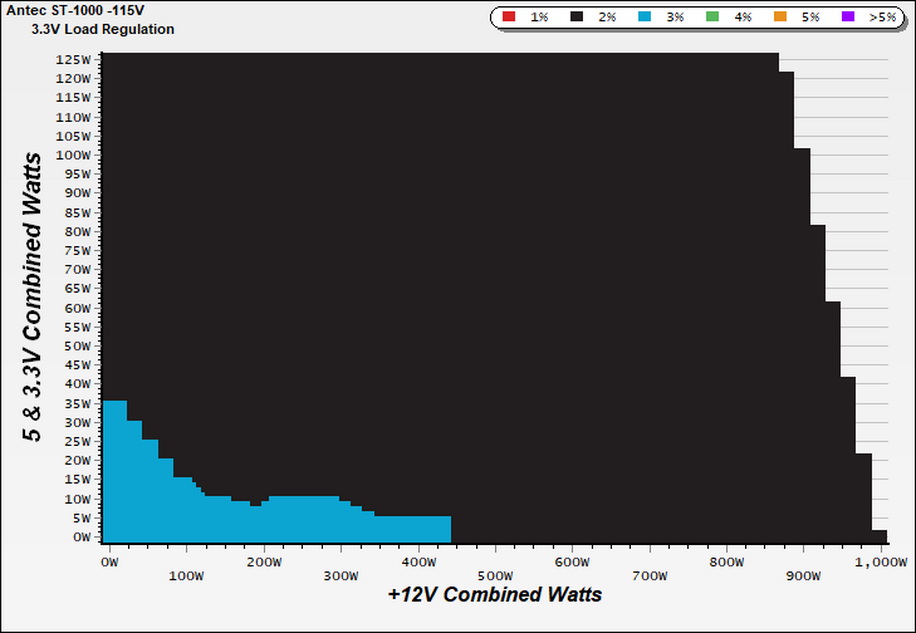
Efficiency Chart
Ripple Charts
The lower the power supply's ripple, the more stable the system will be and less stress will also be applied to its components.
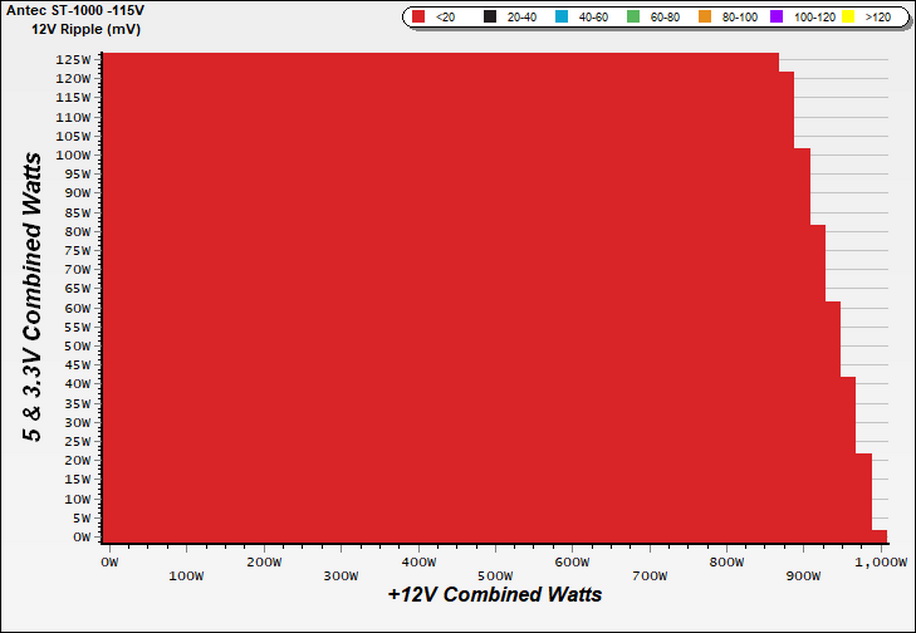
Ripple Suppression Charts
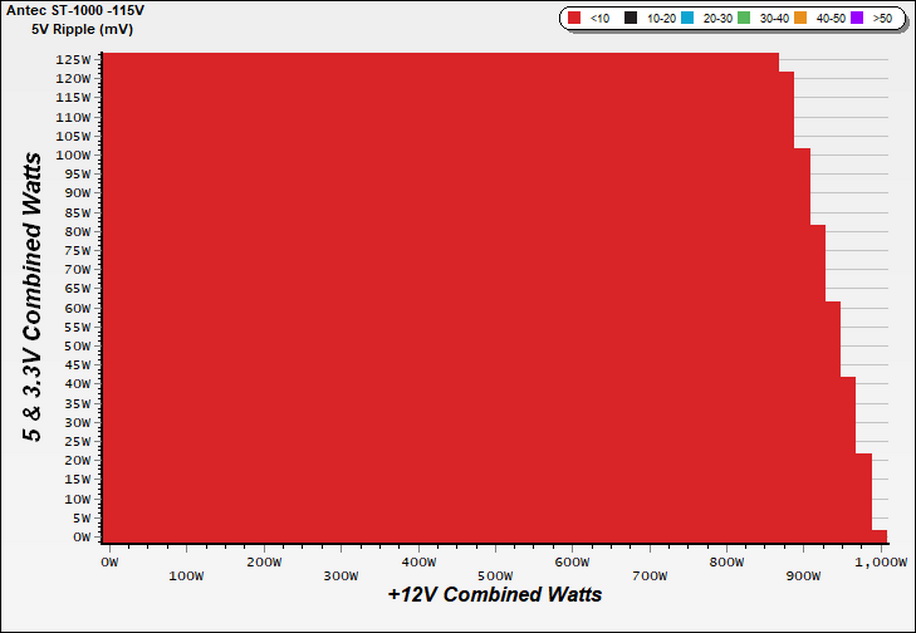
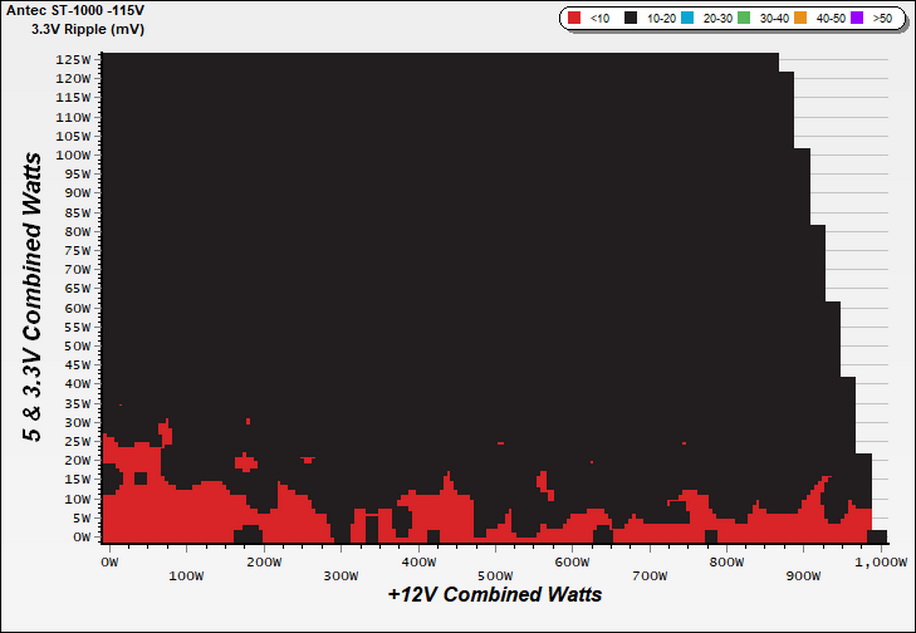
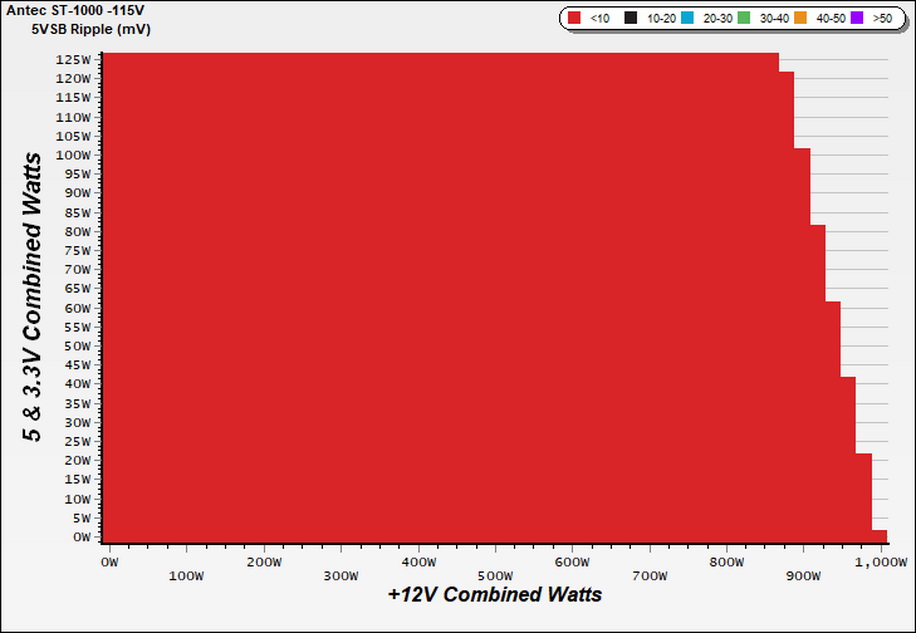
Infrared Images
We apply a half-load for 10 minutes with the PSU's top cover and cooling fan removed before taking photos with a modified FLIR E4 camera able to deliver an IR resolution of 320x240 (76,800 pixels).
Get Tom's Hardware's best news and in-depth reviews, straight to your inbox.
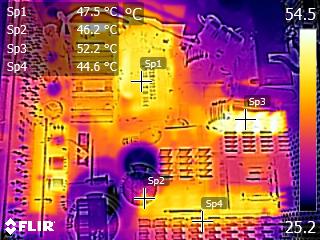
IR Images
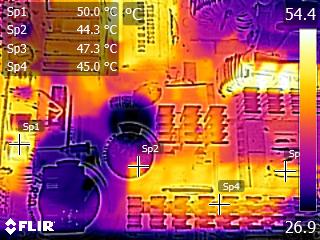
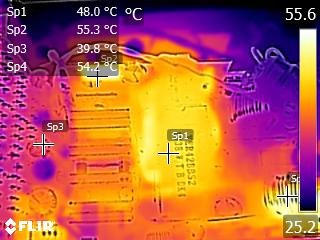
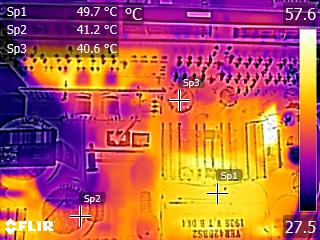
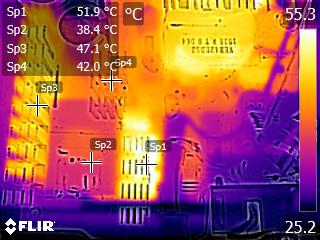
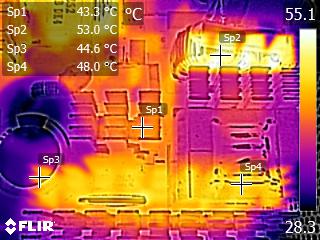
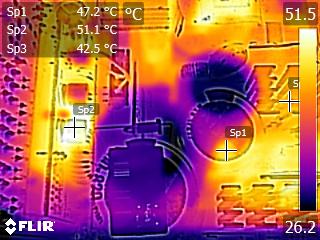
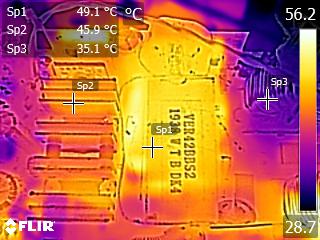
Thanks to the high efficiency levels, the thermal loads are decreased leading to low internal temperatures during this test.
MORE: Best Power Supplies
MORE: How We Test Power Supplies
MORE: All Power Supply Content
Current page: Protection Features, DC Power Sequencing, Cross-Load Tests and Infrared Images
Prev Page Load Regulation, Hold-Up Time, Inrush Current, Efficiency and Noise Next Page Transient Response Tests, Timing Tests, Ripple Measurements and EMC Pre-Compliance Testing
Aris Mpitziopoulos is a contributing editor at Tom's Hardware, covering PSUs.
-
refillable This is the first review I saw on the Seasonic titanum platform. Looks good on paper but I'd personally avoid it. Are you not extremely concerned about that sky-high OCP? I mean 117 A, that's huge! What if something went wrong? Wouldn't that instantly fry something? Shame Seasonic doesn't bother having multi-rail OCP on a 1000W unit. Something like the HX1000 I think is a better option with multi-rail OCP. I think 1000+ W PSUs without multi-rail OCP is just asking for trouble.Reply
I wonder why you don't seem to agree with this and instead give this thing an editor choice award. -
Aris_Mp Replyrefillable said:This is the first review I saw on the Seasonic titanum platform. Looks good on paper but I'd personally avoid it. Are you not extremely concerned about that sky-high OCP? I mean 117 A, that's huge! What if something went wrong? Wouldn't that instantly fry something? Shame Seasonic doesn't bother having multi-rail OCP on a 1000W unit. Something like the HX1000 I think is a better option with multi-rail OCP. I think 1000+ W PSUs without multi-rail OCP is just asking for trouble.
I wonder why you don't seem to agree with this and instead give this thing an editor choice award.
The HX1000 also has a single +12V rail: https://www.tomshardware.com/reviews/corsair-hx1000-psu,5214.html -
refillable Reply
No, it definitely has multi-rail OCP around 40A, a huge difference from 117A seen in this seasonic platform. You said that here:Aris_Mp said:The HX1000 also has a single +12V rail: https://www.tomshardware.com/reviews/corsair-hx1000-psu,5214.html
https://www.tomshardware.com/reviews/corsair-hx1000-psu,5214-6.html -
javiindo It would be nice to precise the use case for each power supply. Because the power supply is recommended, but you don't indicate for what. For 1000W maybe a threadripper 3990X with two 2080 ti in SLI?Reply -
waltc3 Replyrefillable said:No, it definitely has multi-rail OCP around 40A, a huge difference from 117A seen in this seasonic platform. You said that here:
https://www.tomshardware.com/reviews/corsair-hx1000-psu,5214-6.html
Yes, the Corsair HX-850 has a single/multi-rail hardware switch for either a single 72A 12v rail or else 7 40A rails...;) https://www.kitguru.net/components/power-supplies/zardon/corsair-hx850-platinum-2017-power-supply-review/3/ -
emgarf Please consider providing power-off rail sequencing as well as power-on. Both are important.Reply -
Aris_Mp Reply
LOL my bad, totally missed that :)refillable said:No, it definitely has multi-rail OCP around 40A, a huge difference from 117A seen in this seasonic platform. You said that here:
https://www.tomshardware.com/reviews/corsair-hx1000-psu,5214-6.html -
refillable Reply
So, which one do you prefer? The HX seems to as quiet despite efficiency difference, so I don't think the Titanium efficiency matters. Plus, the HX is also cheaper here and in many other countries such as the US and Australia. I think the HX is a much better choice, or at least should be honourably mentioned.Aris_Mp said:LOL my bad, totally missed that :)
